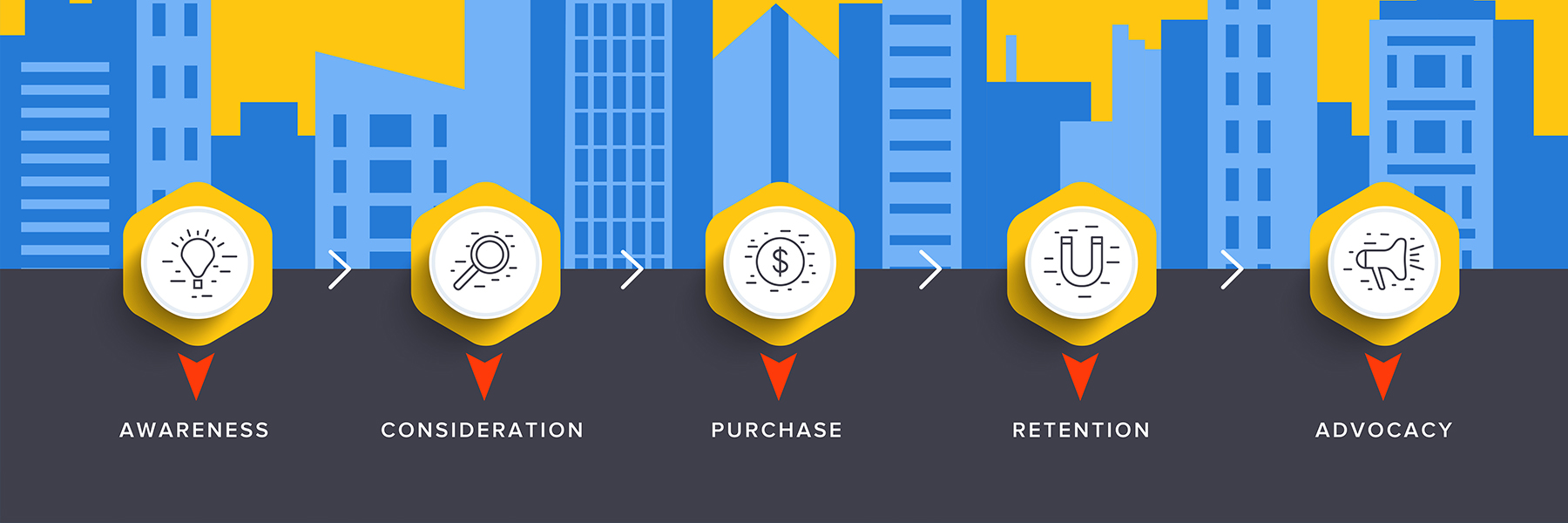
- Home
- Services
- Products
- About Us
- News
- Industries
- Resources
- Contact
Newtown Square • Philadelphia • Detroit • Cincinnati • Sacramento • Rochester • Willow Grove • Orlando • Buffalo

In today’s modern world, consumers are replacing the storied sales rep, with most purchases following a buyer’s own personal research rather than any singular sales rep pitch; instead of a product of overt direction, sales have become dependent on a series of gentle persuasions. Because of this shift, companies are having to look beyond the relationships that their salespeople have with individuals to the various points of contact that all buyers encounter when deciding to buy (or not) a particular product or service. These points of contact represent the buyer’s journey and can be visually illustrated as a multi-step pathway that buyers take across a variety of channels and experiences before making a purchase. Building a buyer journey map enables companies to develop intimate knowledge and understanding of consumer needs and allows them to strengthen their marketing strategies and increase their sales. Take a look at these tips for building a buyer journey map:
To address a need, companies have to know their buyers. Get feedback from the people to whom you aim to sell in order to learn about their specific desires and the thoughts and actions they have while contemplating a product or service. You specifically want to establish how, when, and why they interact with your brand. You’ll likely have multiple personas, and you’ll probably need to create a buyer journey map for each of them (especially the most common ones).
Start with your most typical buyer persona and make a list of all the channels that persona might use or encounter while interacting with your brand. These include your website (and others); internet search engines; apps; emails; review sources; social media platforms; ads; and more!
Now think about the problems and obstacles a specific buyer persona might have as he/she moves from one touchpoint to another along the buyer journey. In simplest terms, buyers start with awareness of a problem and move from the evaluation of its possible solutions to finally deciding (or not) on a particular product or service (hopefully yours).
Consider different scenarios to see if the resources available to buyers (the touchpoints mentioned above) help or hinder their path to purchase. For instance, a buyer might notice that his jumbo roll of toilet paper doesn’t fit in the holder (awareness stage of buyer journey). He might then do an online search and learn that he needs either a new holder or an extender (consideration stage of buyer journey). Finally, he settles on an option that will work in his life: buying a toilet roll extender. Reflecting on the potential steps a buyer would take as he or she researches solutions for a dilemma allows companies to create meaningful encounters for buyers with their brand. Some things to consider include:
Don’t forget to examine the emotions and thoughts driving consumers, along with their actions. Buyer journeys are complicated and rarely linear and you’ll need to identify consumer motivations, as well as their actions, if you want to create a robust buyer journey map.
Next, implement solutions to any possible flaws you see in your brand’s touchpoints. If you notice people are filling their carts but aren’t finalizing their purchases, think about implementing a chat feature to your website so that agents can answer questions and encourage a sale. Figure out the issues preventing buyers from advancing from one stage of the buyer journey to the next so that you can prevent them from losing interest and you from losing a sale!
Of course, a good buyer journey map should be a dynamic tool, ever-changing to meet new issues and new demands. Review your buyer journey map periodically (at least quarterly) and add in different features when you notice buyers becoming discontent with your current engagement opportunities. Buyers constantly change and so will your buyer journey map.
To gain more insight into building better buyer journey maps, please contact Research America. Our market research expertise and the tools we use help our clients create buyer journey maps that accurately illustrate the intricate channels and experiences of their buyers and, thus, better enable them to reach their business goals.